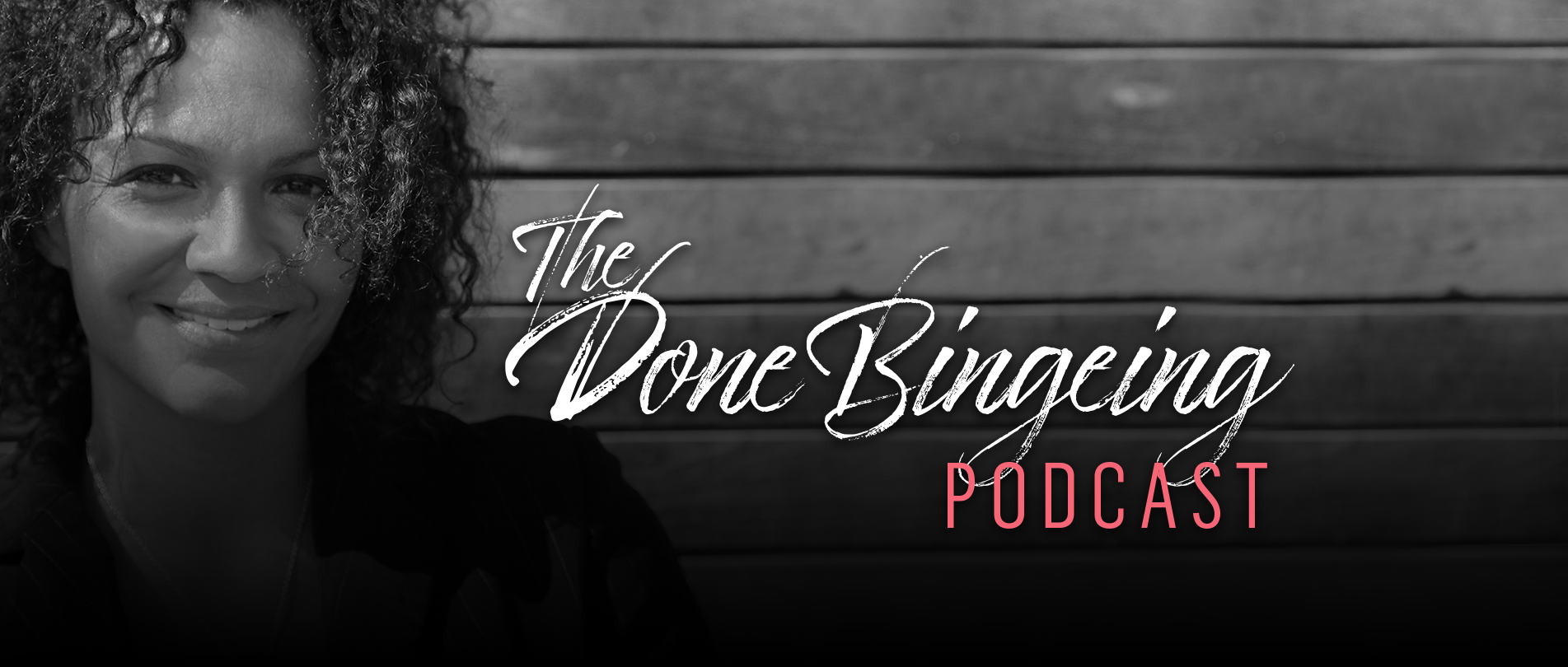
EP #69 Being Well and Eating Well in the New Year
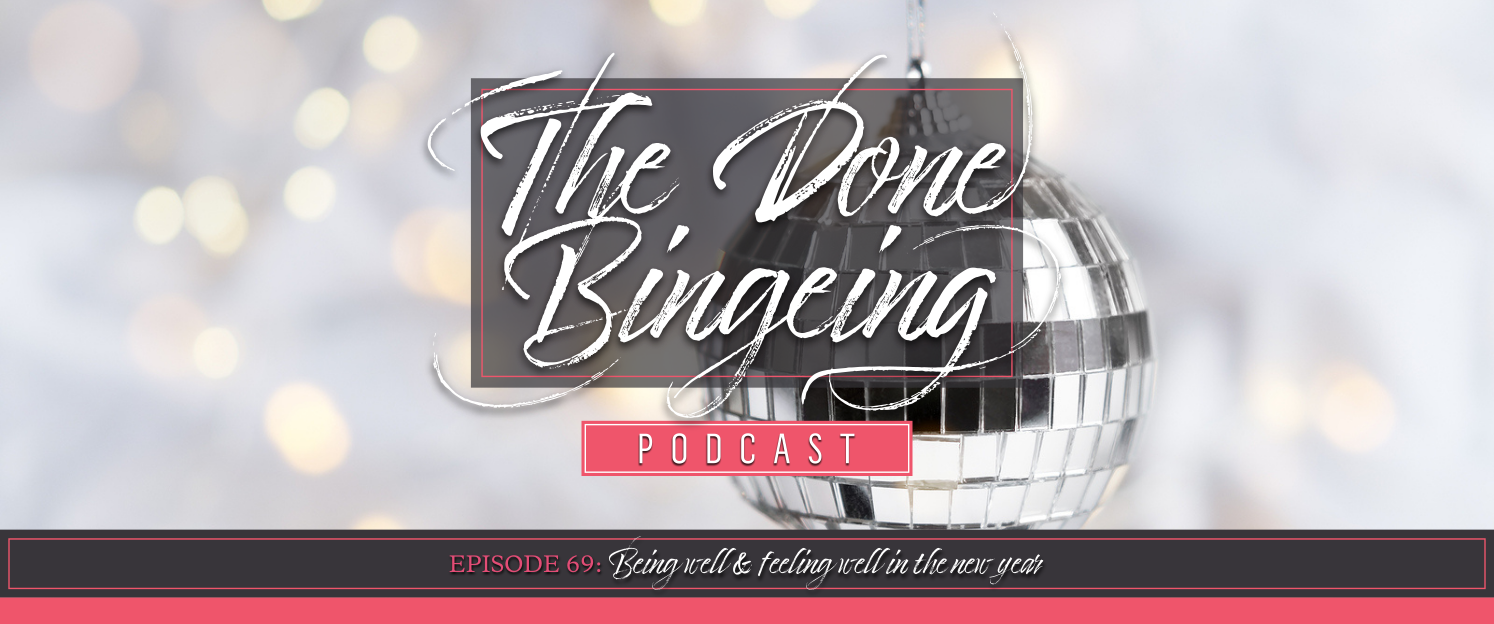
Are you making resolutions, writing down goals, envisioning dreams? This can be a tough time for binge eaters because where a binge eater is on their journey is often quite far away from where they want to be. And when something is desperately wanted that feels far, far away, our instinct at New Year’s—especially with all the messaging that’s come our way—is to do an about face. For many binge eaters, that means a new diet starting January 1.
This episode is about thinking about the new year to come, grounded in an understanding of how meeting critical needs makes living our dreams so much more possible. When our needs are met, we experience a different set of emotions than when our needs are not met. So let’s focus in on well-being! When we take care of this, we feel better, and when we feel good it’s so much easier to eat the way we dream of without the 180 that often swings back to 0 a few weeks into the year.
Want to skip the 180 flip? Let’s talk. Go to www.holdingthespace.as.me/free30 and get on my calendar today for a free, 30-minute consultation.
Get full show notes and more information here: https://www.holdingthespace.co/69.
Listen to the show
Subscribe: Apple Podcasts| Stitcher| Google Podcasts | Spotify | iHeartRadio | Amazon Music | Deezer | RSS
- Centre for Nonviolent Communication. (2005). Needs Inventory, available at https://www.cnvc.org/training/resource/needs-inventory. Retrieved December 22, 2022.
- Clear, James. (2018). Atomic Habits: An Easy and Proven Way to Build Good Habits and Break Bad Ones. New York: Avery.
What do a pole and a pentangulation have to do with you and binge eating? Keep listening!
Welcome to The Done Bingeing Podcast. This is the place to hear about how you can pair the emerging brain science about why you binge with powerful life coaching to help you stop. If you want to explore an evidence-based, non-clinical approach to end binge eating, you’re in the right place.
It’s time to free yourself. You have more power than you know. To find out more, go to www.holdingthespace.co and click Programs.
And now, your host, Internal-Family-Systems-Level-3-Trained and Master-Coach-Certified Martha Ayim.
Hey friends, how are you doing as 2022 wraps up? Are you making plans for the new year? If you are making resolutions, writing down goals, envisioning dreams, or signing up for diet programs? If so, let’s talk about it. This can be a tough time of year for binge eaters because where a binge eater is on their journey, is often quite far away from where they want to be.
If it’s a place that feels far, far away, one of our instincts in the new year, especially with all the messaging that comes our way, is let’s do an about face. And, listen, I had many New Year’s where I felt hope as I set out my resolutions, wrote down my goals and I dreamed of what I really wanted to come true. And that took me into the new year feeling hopeful and excited.
I was going to try something new. I was going to read something different about bingeing, join a new program, start a new diet. I had other goals too, and sometimes that was just fine. And it got me several weeks into the year, several months into the year. Of course I wanted to be perfect in my resolutions and as things shifted, sometimes that was okay, and sometimes that felt really devastating.
So I want to talk about thinking about the new year to come, with a grounding in one of the needs that we talked about in the last episode. In episode 68, inspired both by the Center for Nonviolent Communications Needs and Feelings inventories, we talked about how, when our needs are met, we typically experience a different set of emotions than we experience when our needs are not met. We also talked about how the emotions we feel, I’m sure you’ve experienced this, have tangible connections to how we eat.
The needs inventory included connection, physical wellbeing, honesty, playfulness, peace, autonomy and meaning. Today, we’re focusing on one of those needs, physical well-being.
And it’s shelter, water, air, safety, touch, sexual expression, rest/sleep, movement/exercise, and food that comprise physical well-being (CNVC, 2005).
So let’s look at these one at a time—naming the facets of physical wellbeing and exploring what they’re about.
Shelter
Our living situations. Do we have a place to live? Do we like where we’re living? Is it meeting our fundamental needs in terms of housing?
For many of my podcast listeners, this is going be like an absolute yes, even—You want a new kitchen? You want a new bathroom? Maybe you wish the floor was a different wood, or the walls were a different color.
And for some of my podcast listeners, it might not be an absolute yes. And as we go through these facets of physical wellbeing, I want to acknowledge that. For anyone who’s listening to this, these may be so utterly there and may be non-issues or these might be there to such a minimal extent that they are a key player for you.
I don’t want to exclude any of these aspects of physical well-being—even if we are in a position where we take some of these things for granted—because they matter. And when we don’t take for granted foundational parts of our physical well-being, but instead name something fundamental that we have full access to, we can experience deep gratitude.
Water
Most of us have water, most of us have plumbing and, depending on your views about water, you may or may not feel that it’s truly clean and safe to drink. Maybe you feel you need a rigorous filtration system to take out some of what’s put in.
Air
You are breathing air or you wouldn’t be listening to my podcast. Now, you might have perspectives about your air. Maybe it’s not clean air and you can document that from your region’s quality reports of the chemicals that are in the air. We’re living in a time of coronavirus, so you may be thinking about viruses in the air around you. It’s airborne. So in terms of air, those are some of the things that come up.
Safety
One facet of safety is physical safety—physical safety with the people you’re around in the home, with the people you’re around in the neighborhood where you live.
Emotional safety—the absence of emotional abuse is one way to think about emotional safety. If there’s emotional safety at one end of a continuum and there’s emotional abuse at the other end, in-between there are so many different pieces of emotional safety, right? It could involve people commenting on your food, commenting on your weight. Some of those comments can be very explicit and intentionally derogatory. Some of them can be coming from a place of concern and a desire to help, but if we’re going through a place with our food and our eating where we’re quite self-conscious—some of these comments can leave us feeling exposed or unsafe. What somebody else thinks is an okay comment to us can be like, “Yo, that’s totally not okay.”
Now, what I’m not saying is that if someone comments on your food, comments on what you’re eating, comments on your body, all of a sudden you are emotionally unsafe. But what I am talking about are things that can happen that can touch on our sense of safety, even though there’s so much that we can do about that.
Food safety—food in the house can, for a binge eater, can be connected to a sense of safety. Sometimes the pantry can feel unsafe. These are things that can be very easy to make fun of—but only if you’re not a binge eater whose done time cringing by the pantry door. I know, I know, there’s no way the pantry is doing anything. It’s probably a recessed cabinet with a door on the outside and nothing in there is coming out on its own to put you in a choke hold. Fair enough. But when there is a feeling of lack of control around food that seems untenable, that seems like that can’t be immediately restored or healed or addressed, these things feel very real.
So even if it can be easy to say from the outside, like, “Listen, the pantry has nothing on you.” For binge eaters, it can feel like it has everything on them and that’s what we’re talking about. We’re talking about the reality of where you may be now, not necessarily the objective reality that there’s no way a pack of macaroni and cheese is going to come out and whap you upside the face.
So there’s an objective reality and then there’s your subjective reality and if you feel unsafe with the cookies in the pantry, let’s start there without any judgment around that.
Touch
With physical well-being, we’re not islands. Yes, we are individuals, but we’re part of a social structure and community, even if we don’t have specific close-knit communities in our lives, we are part of a community in terms of our neighborhood, our state, our province, our country, the world. We’re not alone.
Now, I’m not saying, let’s just open the front door and say, “Hey, come on in and touch me.” But there is something about touch that has so much to do with physical well-being. It doesn’t have to be sexual touch. For example, I had a cat. Okay, I’m not even going to tell you the story about how I came to have this cat, but I had a cat and the way she used to touch me and rub her fur on me—you know how cats do that? They go around in circles, in circles, in circles. What my cat loved to do is when she fell down, she always flopped down—and she was a very fluffy, full-bodied cat—with her fur all across my face, so I couldn’t breathe. I had like a mouthful of her fur, but that touch of her velvety fur and undercoat was just exquisite, as was her paw when she would touch me.
So touch could be from a pet, it could be a cat, it could be a puppy. Listen, it could be a lizard. We’re talking about loving the touch of things. It can be the touch of grass on our bare feet. It can be the touch of water on our legs as we walk through it. It can be the touch of water through our hair and on our body. It can be the touch of another person. That could be a friend, a partner, a child, a relative, a parent. It could be a professional, like a massage therapist. It could be a lover. It could be touched from clothes, right? Do you love the way your clothes touch you? Do you love the different materials?
Sexual expression
I’m not saying you need like a pole in your living room and a striptease act. That’s not what I’m saying. Sexual expression can be sexual. It can be with a partner and, listen it can be on your own, you know what I’m saying?
It can be sensual and less sexual. It can be expressed in any number of ways. It could be artistic, it could be writing. I love writing. You can be sensual and sexual in your writing, in, in the way you move your brush, brush across canvas in the colors you choose in the texture of the paint. Are you going to use oil? Are you going to use watercolor? Are you going to do an underpainting?
There’re so many ways to express sexuality, and I just touched on a few of these.
Rest/sleep
There is no doubt that being rested and having sufficient sleep is an essential part of wellbeing, especially for people who are struggling with food. Many people say sleep and rest are your best friends. You want to eat in a way that serves you.
Because part of what happens is when we’re not rested, when we don’t get enough sleep, our brain works differently. Now, that doesn’t mean we’re powerless, that if we get a crappy sleep, we may as well just eat junk all day.
That’s not what it means, but it is important to know that when our brain is not well rested the part of our brain that tends to light up is the lower part of the brain. That’s the brain that seeks immediate reward. It’s going to give us a bit of energy now, forgetting the long-term consequences.
Versus the higher brain that’s more likely to choose food that feels amazing in our bodies, that makes sense for our bodies, when we’re hungry.
Movement and exercise
My coach once said to me, motion is the lotion for the body. Movement helps us . . . what’s the word?—a few moments away from talking about a pole and a striptease, I’m really afraid to use the word “lube”—so I’m trying to find of another way of saying this! Let’s just stay with, motion is the lotion for the body. When we move around, we feel like we can articulate our joints.
It’s not just up, down, back, and forth. We can articulate our joints right. I remember when, my husband and I bought our bedroom furniture when we moved in together and we were being sold the cabinet that would hold the tv and it wasn’t just a door that opened and closed, it was an articulating door where, yes, it opened and closed and it had another . . . don’t ask me to name it! There was a back and forth, in and out movement in addition.
Okay, so with movement and exercise, we can articulate our joints, we can move with a sense of freedom. This doesn’t mean we’re going to hit the gym at 5:00 AM come January 1st, five days a week. (Or maybe it does. Maybe that is your New Year’s resolution. Listen, there was a time when I did that. When I was at U of T, I was at the gym at five in the morning. I did my workout before I ever went to work at eight o’clock, and it was part of what I did. I loved it, and it worked really, really well in my life. So I’m not dissing that if that’s a way of living that feels really amazing for you. But what I am saying is it doesn’t have to be that.
My teacher, coach and mentor Brooke Castillo taught about the concept of a minimum baseline, and so it might be like five minutes of getting up and moving. This could be going up and down your stairs. This could be walking back and forth in your house. This could be not doing anything other than intentionally acknowledging that when we get up and do the dishes, go up and down stairs, even when we use the bathroom. Well listen, we’re of varied genders here and sometimes we sit and sometimes we don’t, right? When we sit, let’s count it as a squat, just honoring and acknowledging that we’re moving. Is there something else we want to add to that? Do we want to walk across the floor to wash the dishes, or do we kind of want to prance or dance? What is a minimum baseline that we can acknowledge and maybe augment?
Food
I’ve come to food last, not because it’s the least, but because for people who struggle with binge eating, it’s often the place we start. And the reason I wanted this episode to be about so much more than food is because I wanted us to remember that so many other things matter.
If we’re breathing air, that feels like fumes, if we’re scared that there’s a virus right in our air, If we’re drinking water that tastes like a little bit of rust and it kind of looks like a little bit of rust, maybe that’s going to matter to us if we’re living in a home. Or maybe we’re renting and it seems okay, but there are cracks all over the ceiling and they seem to be widening and there’s like a lot of snow that just landed after a massive snowstorm. Yes, we have shelter, but are we feeling safe in it? Safety in our neighborhood, around the people around us, in our homes, outside our homes, our fellow neighbors, maybe our fellow countries. The food in our house, a sense of safety, sexual expression, rest, movement—all of the things we’ve talked about.
These are also a part of physical well-being, not just food. When we name the other pieces and maybe have gratitude that some of those are already so there for us and notice that some of those aren’t quite there for us and we can maybe take steps that will help us augment them so that they’re there for us in a way that really meet this need of well-being, that can help us so much when we get to food.
Food is obviously a part of physical wellbeing, right? There’s a part of food that’s about nutrition, about nourishment, about satiation and satisfaction. If we don’t have food, we’re obviously going to starve and if we don’t feed ourselves enough, we are often hungry. Some of my clients come to me with pretty extreme states of hunger, largely because of being convinced to try diets that might be labeled “reasonable,” but for them, they feel completely unreasonable. For any number of reasons, they come to me struggling on food programs, protocols, diets that are made up and proposed by people who mean the very best. And listen, I was on many of these diets and many of them worked for me for certain times. And there were things that I always learned about all of them. Even if some of them didn’t work for me, I learned that that didn’t work for me. So part of this was a process of elimination that’s not going to work for me, and part of this was a process of learning. Some of that did work for me, but that wasn’t the whole piece.
Where food becomes physical well-being is where we understand what we want it to do for us. We need it to nourish us. We need it to fuel our bodies so that we can live. Now, I’ve had clients who have hired me and they don’t want food to be any more than macronutrients, micronutrients, vitamins, and minerals to fuel their body, and that’s it. They don’t want a drop of pleasure. They want food to be like filling up the car with gas and that’s it. Fine. We did that work. They didn’t want that to be part of their artistic expression and sensuality or anything else.
And I’ve had a few chefs hire me too. They’re like, “Oh no, we are not doing that. Food for me is beauty, every aspect of it. And they would pentangulate the experience, and it was about all of the senses. So it would be about smell. What did it smell like? It would be about taste. What did it taste like? What was the texture of it? So that’s a kind of feel and touch. It would be about sight. What did it look like? It would even be about hearing, like would it crunch in our mouths? It was about our senses—hearing, seeing, tasting, touching, smelling.
I’ve talked about two extremes: we want none of that and we want all of that, and in-between there are so many ways to land in the middle or someplace between the two. Where is it that you want to be with your food? When we don’t have a sense of that as we enter into a long-term commitment at the start of a new year, at the start of the month, at the start of a week, at the start of a day, sometimes we can trip ourselves up because we can set ourselves up for things that we just really don’t want to have.
Maybe we don’t like a food, it actually turns our stomach. For some of my clients, they’ve been on diets that turn their stomachs, where food tasted like cardboard. This is part of what we can think about when we’re thinking about how we want food to be a part of our wellbeing.
***
So far in this episode, we’ve focused on nine aspects of physical wellbeing, and it’s about so much more than just food.
One of the things that might be helpful is to rate these nine aspects: shelter, water, air, safety, touch, sexual expression, rest/sleep, movement/exercise, and food.
So, on a scale of zero to 10, where are you with each of these? Zero, nothing, no amount of it?. Ten, absolutely, the best you could have? Or a number in-between.
You can rate where you are and where you want to be.
Sometimes I think when we’re binge eaters, there can be so much chaos, right? So many things. It’s like juggling so many balls. And I like to put the balls down and like to look at where they are. So if we put them down and we rate these nine aspects of physical well-being on a scale from 0 to 10, we get some sense of order.
You don’t even have water? That’s a zero. Do you have water that comes from a tap that is hot, cold, clean, and delicious? That’s a 10. Are you part way in between, at a place where it’s just right for you right now?
I invite you to rate all of them. Let me give you an example of rating shelters. My best friend is renting a place, and she’s made the decision that right now that—given that she has long covid and the impact that’s had on her ability to earn an income—she’s going stay put. She has shelter, but there’s lots of things that she doesn’t like about her place. As she named that for herself, she didn’t do this like zero to 10, but she came to a place, not explicitly with a scale rating but implicitly, where she really just noticed, “Listen, I’m here and this is definitely not what I want, but how could I make it more the way I want while I’m here?” And she bought some cabinets and she doesn’t have a closet on her door, so she made her closet beautiful without a door. Instead of things being hidden behind a closet door, which is what she wanted, she made what was inside the recess in the wall beautiful, with baskets and colors and cloths that she really loved.
So when we set this down, zero to 10, we get a sense of where we are. So where are you now and where do you want to be. Some of those things might be, I’m a 10 out of 10 and I’m fine. I’m a 9 out of 10 and I’m fine. I’m an 8 out of 10 and that’s fine. I’m a seven out of 10, and that’s good enough. I’m a six out of 10, but that’s not where I’m going focus right now. It gives you a sense of what there is now and where you want to be.
As you ponder these things and you get a sense of where is it that makes sense for you to start, and even as a binge eater, it might not be with food. It might be with rest, it might be with sleep, it might be with safety, it might be with touch. You are the one who will know. So here are a few questions I invite you to ask:
- Where does it make sense for me to start?
- What might be easy for me to address?
- If there was one thing that would make a huge difference in other areas here, what would that one thing be?
- Even if it feels bigger, even if it doesn’t feel easy, what would that one thing be? Right?
Then to go through these nine aspects of physical wellbeing. When you get a sense of where you might like to start, here are some things you can ask yourself.
- What part of this need is not being met?
- Is there something I could change that would help me meet this need?
- Is there a more helpful perspective I could have regarding this need?
- Is there something I could change regarding this need that would make it easier to meet the need?
- Could I use the additional support of a friend or coach or other professional?
- Is there anything that would get in the way of me taking action to address what I’m able to address or to reach out for help? If so, what are the obstacles?
- What kind of obstacles are you noticing? Factual circumstances? Your thoughts/perspectives?
- What strategies or support would help you overcome these obstacles?
On this podcast, we’ve talked about circumstances and thoughts. Circumstances are things that can be verified in our lives and thoughts are sentences that go through our brain.
So are there things in your surroundings with any of these aspects that you can change? And listen, part of the reason why we move on to thoughts is because there are some circumstances we can’t change, and that does not make us powerless because we still have the opportunity to come from a perspective that is enriching rather than diminishing.
And if there is a circumstance in our life that we can change and we like our reason for changing the circumstance, why not? One of the reasons I love James Clear’s work, he’s the author of Atomic Habits, is because he gives us permission to make this easy, and for so many of my clients that doesn’t feel good to them. Like there’s a part of this that has to feel hard and if it’s easy they get really scared. What I love about Clear’s work is that he’s so well respected and has so much to offer about changing habits and he gives us permission to make it easy.
Is there something in our circumstances that we can do if you like your reason for changing it? If you do, and if it feels right for you, change some circumstances, because when you do, some of the thoughts that you have will automatically change along with them.
So what are some circumstances you might be able to change? If there are circumstances that aren’t immediately changeable or that maybe you can’t change, is there a perspective you could have about them that won’t take you down to a place where you’re eating in a way that doesn’t serve you?
This is where you might be able to do this on your own, and this is a place where you might need additional support. You might need the additional support of a coach, a friend, another professional as you think of the space between where you are and the space where you want to?
Is there a need you can address by changing a circumstance in your life? Is there a need you can help substantially or even completely by changing your perspective about that? Another thing we can ask is, is there anything that would get in the way of you taking this action of addressing what you are able to address or of reaching out for help?
And um, hellooooo, there’s always yours truly right? This is where I am so passionate. This is where I have done so much of my work. I’ve been a coach for seven years working on exactly this? So, and if there’s an objection, what is it? What’s the objection? Is it because you don’t have the time? Do you have a belief that you are not worth it? That would definitely not be my thought, but many of my client’s thoughts are, I don’t have the time to do it. I’m not worth it. It’s not worth my time. It’s never going to matter anyway. And notice we’re back to perspectives again.
Our perspectives matter because what we think about anything that happens in the world, including our needs, will govern how we feel and how we feel has so much to say and drive so much the way we eat.
So this is what I want to leave you with:
Taking care of needs and breaking them down into different kinds of needs and into different facets of each need is a critical part of healing binge eating. Is it about food? Yes, it is, but it’s also about so much more.
And what I want to ask you is:
Are you willing to honor yourself as being important enough to meet these needs?
If you need any help along the way, I’m here for you.
That’s it for episode 69. Thank you for listening. Remember, I am here for you, my friend. Maybe I didn’t make it under your tree. Maybe I wasn’t wrapped up in red and green or in blue and white or in red and green and black. And that’s okay because as 2022 rolls toward its end in 2023 roles toward its beginning, I’m still here for you.
If you have dreams of healing your binging, if you have a goal of eating in a way that feels confident, if binge eating is the one thing that’s holding you back and it’s time to address it, you’ve got me as a coach, and I want to be part of your dream. I want to be part of your goal. I want to be part of your resolution because you know in your bones that there’s something so essential on the other side of binging, and it’s basically your life—unhampered, untethered, and free. And I know in my bones that I can help you get there. I made it from where you are to the other side. I made it to freedom and the purpose of my life is to help you get there too.
So let’s talk. Go to www.holdingthespace.as.me/free30 and get on my calendar today. You have a free, complimentary, 30-minute consultation with me. I promise you, there is nothing I would judge you for. There’s nothing that would surprise me, even if I didn’t try it. There are very few things I didn’t try. I’m very rarely ever surprised by anything regarding bingeing, and even if there’s something I’ve not heard about or I didn’t do, I guarantee you if I’d heard about it when I was still binging, I probably would’ve tried it too. There’s no judgment on my side, only compassion. On this journey, a sense of shame or embarrassment is actually part of the clinical diagnostic criteria of binge eating disorder in the DSM, the Diagnostic and Statistical Manual of Mental Disorders, the DSM-5, May, 2013. And you know what shame hates more than anything? It’s light. And when you book a session with me, you get some light because I’ve been there and there’s nothing you could say that ever would make me feel ashamed of you or strike me as something that is shameful. The reason we binge is because we’re in pain. And in this free, 30-minute session with me, let’s put our heads together and talk about how we can heal this together.
Thanks for listening to The Done Bingeing Podcast.
Martha has the highest-level training in both the evidence-based Internal Family Systems approach and in life coaching, and she’s available to help you stop bingeing. You can learn more about her programs by going to www.holdingthespace.co and clicking Programs.
Stay tuned for the next episode on freeing yourself from binge eating and creating the life you want.
- Never miss an episode by subscribing via Apple Podcasts, Stitcher, Google Podcasts, Spotify, iHeartRadio, Amazon Music, Deezer or RSS.
- Leave a rating and review in Apple Podcast.
- Have a question or topic you’d like to see covered on the podcast? Send it on over to me here.
- If you found this episode valuable, it would mean so much to me if you would please share it with your friends
If you have any comments about this episode, drop me a line!
Click this link to send me an email.
Thank you so much for sharing your dreams with me.
Sending much love back to you!


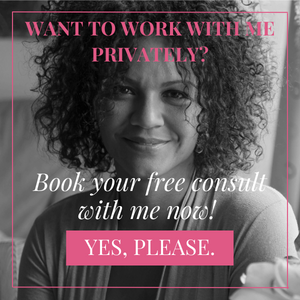
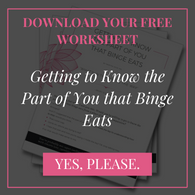
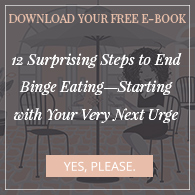

















0 Comments